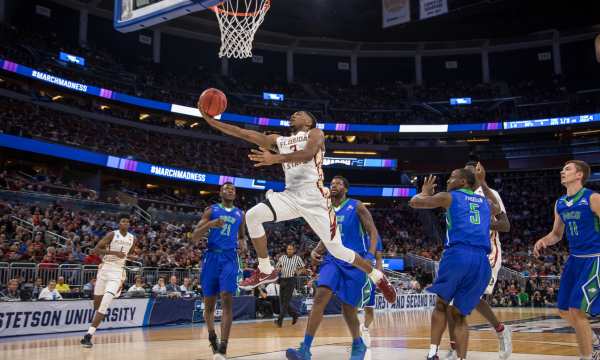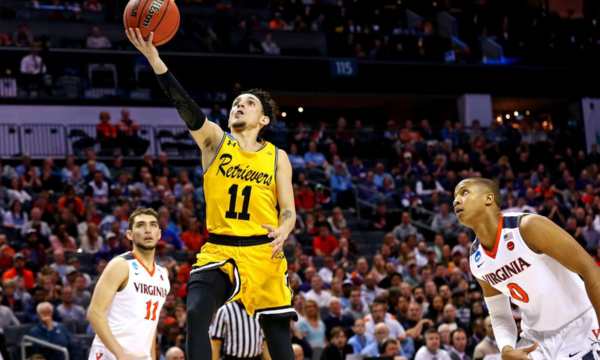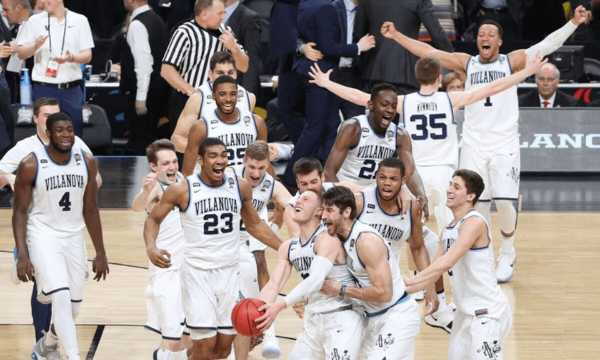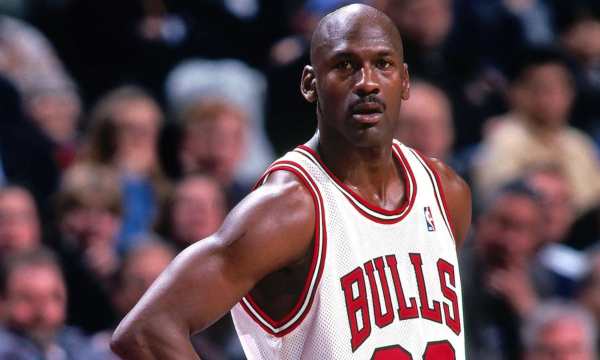March Madness: Discover the Incredible College Basketball
March Madness is the pinnacle of college basketball, an event eagerly awaited by all basketball fans.
Anúncios
While the NBA shines with its established stars, March Madness represents the purest essence of basketball, where college passion and unpredictability create unforgettable moments.
This fascinating journey transforms young athletes into instant legends and small universities into sports giants.
What is March Madness?
March Madness is the nickname given to the NCAA Division I Men’s Basketball National Championship, the most prestigious college tournament in the United States.
The phenomenon began in 1939 and has grown exponentially to become one of the most anticipated sporting events every March.
This championship represents the peak of college basketball, where teams from different conferences compete for the national title in a format that rewards both talent and resilience.
For college players, March Madness offers an unparalleled showcase, where standout performances can define careers and open doors to professional basketball.
How Does the Tournament Work? Format, Brackets, and Elimination Rounds
The championship follows a direct elimination format where a single loss means the end of the journey, exponentially increasing the tension of each game.
It starts with 68 teams, distributed across four geographic regions: East, West, South, and Midwest, with each region containing 16 teams ranked from 1 to 16.
The first rounds, known as the “First Four,” involve eight teams competing for four spots to complete the main bracket of 64 teams.
The main tournament begins with the first round, where the highest-ranked teams face the lower-ranked ones, creating the perfect scenario for upsets and historic comebacks.
As it progresses, the tournament goes through the second round, then the “Sweet Sixteen” (top 16) and “Elite Eight” (top 8), culminating in the “Final Four,” the most anticipated moment of March Madness.
The Final Four brings together the champions of each region in a single weekend, with semifinals on Saturday and the grand final on Monday night, crowning the national champion.
This brutal and unforgiving format allows no mistakes, making each game a true battle where smaller teams can overcome giants, creating the famous “upsets” that define the tournament’s unpredictability.

March-Madness-match-(Source-Google)
Who Are the Favorites and Who Could Surprise?
In March Madness, traditional programs like Duke, Kentucky, North Carolina, and Kansas often feature among the favorites, thanks to their established structures and ability to attract the best talents in the country.
These college basketball giants have impressive financial resources, legendary coaches, and a winning culture established over decades.
However, the beauty of the championship lies precisely in its unpredictability, where smaller universities regularly overcome favorites in thrilling games that go down in history.
Teams like Gonzaga and Villanova have transformed from underdogs to national powerhouses in recent decades, reshaping the hierarchy of college basketball.
Each edition sees surprise teams that capture the national sympathy, like Butler, VCU, Loyola Chicago, and Saint Peter’s, which made memorable runs against all odds.
The combination of traditional favorites and potential surprises creates the perfect balance that makes March Madness so fascinating, where literally any team can win on a magical night of college basketball.
The Stars of March Madness
March Madness has transformed college players into instant legends, offering a stage where heroic performances are immortalized in the fans’ imagination.
Names like Michael Jordan, Magic Johnson, and Larry Bird used the tournament as a springboard for historic NBA careers, creating defining moments like Jordan’s game-winning shot in the 1982 final.
Each year, new talents emerge during the championship, capturing the national imagination with spectacular performances that elevate their reputations and draft positions.
Players like Carmelo Anthony, Kemba Walker, and Anthony Davis led their teams to memorable titles, demonstrating how a single star can completely transform a college program’s chances.
The stars of March Madness often combine exceptional talent with fierce determination, essential characteristics in such a merciless elimination format.
For many of these athletes, the tournament represents the highest exposure of their careers, with millions of viewers following every move and decision on the courts.
The Most Incredible Comebacks and Buzzer-Beaters
This college championship has built its reputation through epic moments where the impossible becomes reality.
Christian Laettner’s three-point shot for Duke against Kentucky in 1992, known simply as “The Shot,” remains perhaps the most iconic moment in the tournament’s history.
Unlikely comebacks like UMBC (16th seed) against Virginia (1st seed) in 2018 represent the essence of March Madness, where established hierarchies can crumble in just 40 minutes of play.
Game-winning shots in the final seconds have become practically a tournament tradition, with heroic shots from Kris Jenkins (Villanova), Lorenzo Charles (NC State), and Jalen Suggs (Gonzaga).
The unique pressure of the championship, where a single loss means elimination, creates the perfect environment for moments of individual redemption and collective overcoming.
Unlikely scoring runs, reversals of huge deficits, and heroic defenses in decisive moments are recurring elements that keep millions of viewers glued to their screens.

UMBC-defeats-Virginia-in-2018-(Source-Google)
Curiosities, Records, and Traditions of March Madness
March Madness is filled with fascinating traditions, such as the ritual of “cutting down the nets” by the champions after the final, symbolizing the national title conquest.
“Brackets” (predictions of all game results) have become a cultural phenomenon that mobilizes millions of Americans, from experts to people who barely follow basketball the rest of the year.
The championship has also generated its own expressions like “Sweet Sixteen”, “Elite Eight”, and “Final Four”, which have transcended basketball and entered the American popular vocabulary.
Impressive records have been set in the tournament, such as Glen Rice’s 184 points for Michigan in 1989 and Mike Krzyzewski’s 30 wins in the Final Four.
CBS’s “One Shining Moment” song, played after the final while the tournament’s best moments are shown, has become a beloved tradition for fans since 1987.
For many universities, simply qualifying for the tournament represents tremendous success, while traditional programs consider national titles the only acceptable measure of success.
Why is March Madness So Special?
The simple elimination format, where any team can be eliminated in a single bad game, generates a level of unpredictability rarely seen in other sporting events.
The authenticity of the emotions displayed by young athletes, many experiencing the peak of their sports careers, contrasts with the calculated professionalism often observed in professional leagues.
March Madness also benefits from the deeply rooted system of college loyalties in American culture, where family traditions and institutional connections create intense emotional bonds with teams.
The concentration of games in a short period (three weeks) produces an emotional intensity that other sports, spread over long seasons, simply cannot replicate.
Additionally, the championship provides a unique platform for inspiring personal stories to emerge, connecting viewers to human narratives that go beyond statistics and results.
Essential Terms to Understand the Game
To fully appreciate March Madness, some specific terms are fundamental, starting with the “seeds” system that ranks teams from 1 to 16 in each region.
The “bracket” is the diagram that illustrates all the games and possible paths to the title, becoming the object of predictions across the country.
Expressions like “Cinderella” refer to low-seeded teams that exceed expectations and advance surprisingly in the tournament, capturing national sympathy.
“Buzzer-beater” describes dramatic shots in the final seconds, often defining games in an unforgettable way.
Teams considered “on the bubble” are on the borderline between qualifying and elimination before the official selection of participating teams.
The selection committee considers metrics like RPI (Rating Percentage Index) and Quadrant Wins to determine which teams deserve to participate in the college championship.
“One-and-done” describes talented players who stay only one year in college before declaring for the NBA draft, a common phenomenon among top stars.
Familiarizing yourself with this vocabulary significantly enriches the experience of following March Madness, allowing a deeper appreciation of the tournament’s nuances.
Conclusion
March Madness remains one of the purest and most exciting sports experiences on the planet, combining the best of college talent with the relentless pressure of the elimination format.
For players, the tournament offers an unparalleled platform to showcase talent and build lasting legacies.
For fans, it provides three weeks of intense sports excitement where college loyalties, regional rivalries, and personal narratives intertwine in a fascinating way.
FAQ
When exactly does March Madness take place?
How are teams selected for March Madness?
What does it mean when someone talks about a “bracket buster”?
Which universities have the most titles in March Madness history?
 8 College Basketball Dynasties That Dominated the NCAA
8 College Basketball Dynasties That Dominated the NCAA
In college basketball, some teams were born to dominate. Discover the teams that made history in sports! Anúncios College basketball is one of the biggest sports […]
Keep reading Michael Jordan: Learn All About the Court Legend
Michael Jordan: Learn All About the Court Legend
The journey of Michael Jordan is a lesson in perseverance, talent, and unwavering determination. Anúncios His impressive leaps have become a trademark that transcends the sport. […]
Keep reading LeBron James: Curiosities About the King of the Court
LeBron James: Curiosities About the King of the Court
Considered one of the greatest athletes of all time, LeBron James has revolutionized the way we see modern basketball. Anúncios His story inspires millions of fans […]
Keep reading